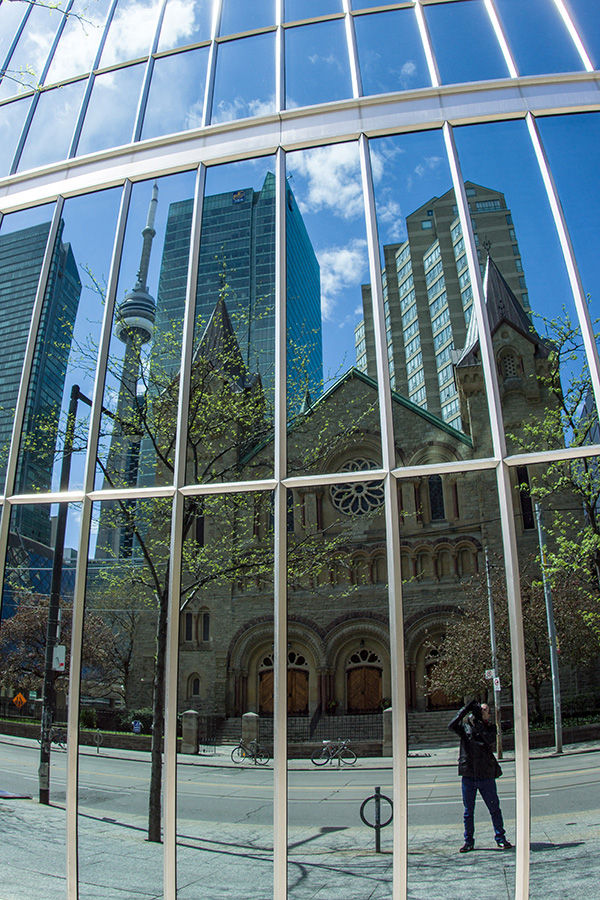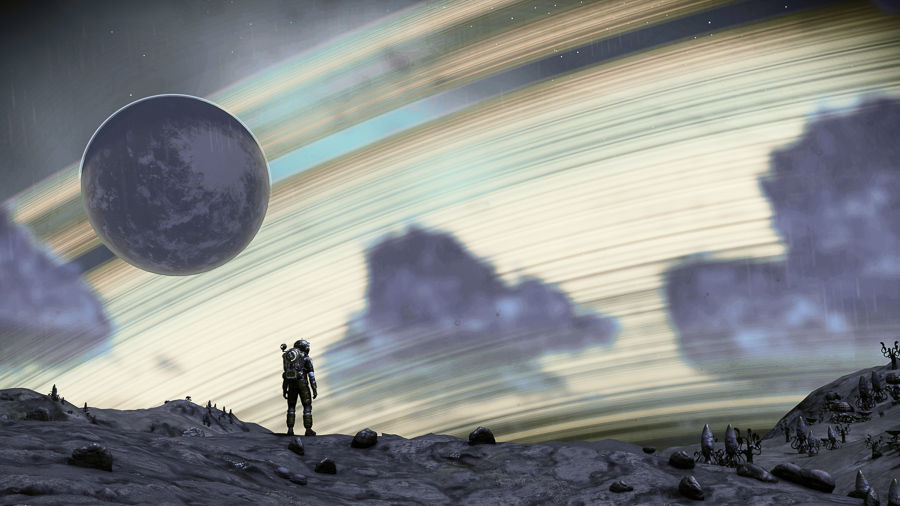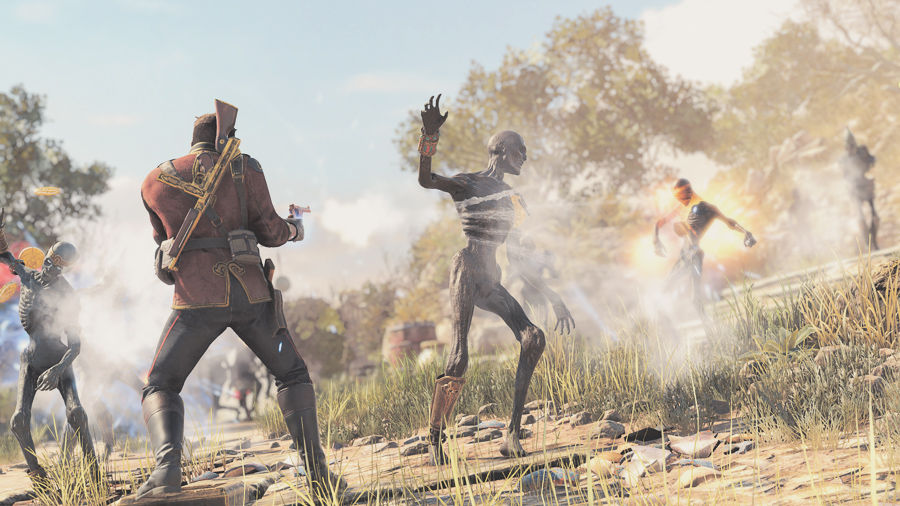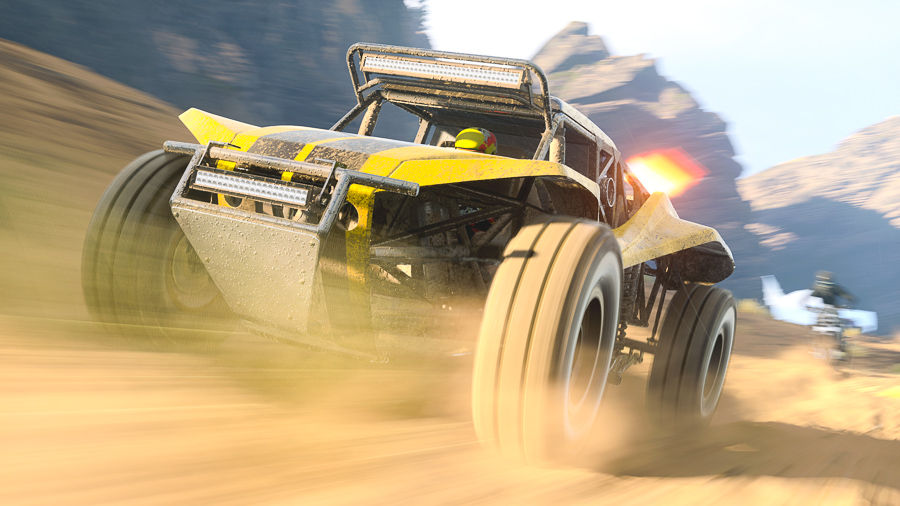- Mik Bromley

- Apr 5, 2019
- 7 min read
Updated: Feb 14, 2020

As the inclusion of consumer photo modes becomes more common in today's video game market and the art of virtual photography continues to grow in significance, an increasingly apparent conflict is arising between this new creative pastime and a more long-standing staple of games, multiplayer. A conflict that presents itself on more than one level and has yet to be fully resolved but there are solutions and these two features need not be mutually exclusive.

you are still the sole operator and likely prefer to have time and space without distraction
Although not always the case, many photographers would undoubtedly consider their work to be something of a solitary pursuit. Yes, a lot of professional shoots occur with a studio setup, a host of assistants and willingly compliant subjects but the purely creative side of the art is much more suited to an individual and their camera. Being out in the wild, finding moments to interpret and feelings to capture is at times a very personal process and one that is best done without an obtrusive entourage. This escape from interference can be rewardingly therapeutic and allows creative experimentation that could be otherwise stifled by outside input.
The same applies to virtual photography where you are an inherently silent presence, acting beyond the awareness of your virtual subjects and this non-pressured anonymity can really aid the creative process. While the game and photo mode tools are enabling, perhaps even akin to assistance at times, you are still the sole operator and likely prefer to have time and space to compose a shot without the distraction of others eagerly chasing their own agenda. This is something that is facilitated greatly by the contemporary standard to freeze game action when entering photo mode, allowing the virtual photographer unlimited time to contemplate how best to capture that precise moment but it is also this very feature in which the next conflict lies.
it is the compatibility with multiplayer that presents a problem
While freezing game action is uncomplicated for a lone player, the same cannot be expected when other people are involved. Whether co-op partners or competitive opponents, it is not likely that either would tolerate their action being halted for any length of time while one individual composes a photograph, and let's be honest, sometimes that is not an especially quick process. In an industry where multiplayer is often king, it is unfortunately the virtual photography tools that are being sacrificed.
Amongst the most recent examples of this sacrifice is in Bioware's action RPG, Anthem which, forgoing any controversy about comparisons between concept and final versions, exists in a beautiful landscape environment with dynamic lighting that is just asking to be photographed. However, the world of Anthem is also multiplayer focused and so no photo mode was included in the game, leaving a wealth of missed photographic opportunities. When the matter has been raised with Anthem's Executive Producer, Mark Darrah, he openly stated that while implementing a photo mode in a multiplayer environment was entirely possible, the difficulty actually comes with certain photo mode features that people may expect, specifically the pausing of game play.
While I can only agree that freezing a multiplayer game for everybody is not a viable option, I also believe that removing all camera tools is too great a compromise when other options are available, more on those in a moment. It is at this point that some people will happily point out that you can simply disable the HUD or, in the case of Anthem, wait for the idle camera to begin orbiting the player's javelin in order to capture screenshots. While these options do indeed allow for screen captures without in-game paraphernalia, they offer no compositional control and are absolutely not a substitute for creative camera tools. I cannot stress enough that shot composition is paramount in creative photography and requires the considered use of camera angle, focal length, depth of field etc. If virtual photography is to be taken seriously as an art form, as it rightfully should be, the right tools need to be available to the artists.

In the case of multiplayer however, the exact same photo mode tools remain available but with one simple difference
So, about those options that would allow virtual photographers the creative freedom they are looking for without encumbering other players with the needs of the average photophile. A couple of examples immediately come to mind which share the same approach and perhaps offer the simplest solution to the problem. In both Hello Games' No Man's Sky and Rebellion's Strange Brigade we have games that facilitate both single player and co-operative multiplayer game modes while maintaining full access to their respective photo modes in each case. In single player instances, each game offers a photo mode with full camera control and utilises the customary approach of freezing the action to enable the photographer to capture any moment unhindered. In the case of multiplayer however, the exact same photo mode tools remain available but with one simple difference, the game does not freeze and instead continues around you.

It can be that simple, any player is able to enter the photo mode to take advantage of the photographic options while the other players continue playing as though nothing has changed. Of course, this does present its own problems and not just the fact that the advantages afforded by a frozen scene are lost. As the person entering the photo mode is still an active player, their character becomes idle and exposed to danger and so it is likely that the photo opportunity will be curtailed by their untimely demise. It is also quite possible that the action you aimed to capture will move away from your stationary avatar and beyond the reach of whatever camera bounding sphere has been implemented. Despite this, a photo mode without game freeze is a significantly better option than no photo mode at all and there is even a case to be made that this type of mode is more true to life where it is obviously not possible to freeze time and photographers must use different skills and approaches to capture a desired moment. It's just that those skills are somewhat more accessible in real life than they are using various menu tabs and a controller.

an elegant and unobtrusive solution for full virtual photography support in a multiplayer environment
An alternate, and extremely interesting solution is the one implemented by Codemasters Evo in Onrush. Once again, this is a game with both single and multiplayer modes and while the particularly well featured photo mode can be accessed at any time when playing alone, take the game online and no such luxury is afforded. That is not to say that you cannot make use of Onrush's online modes for virtual photography opportunities, you absolutely can thanks to an ingenious inclusion that actually benefits photographers in both the game's online and offline states.

Rather than entering the photo mode during an online race, Onrush allows the player to store a 20 s replay of the action simply by pressing the DualShock 4's touch pad at any point in the race. Up to 5 replays can be cached and revisited from the game's main menu after the race is complete. Crucially each replay includes the full resolution game render for the recorded period and is fully explorable with the ability to fast-forward / rewind, follow any chosen car and enter the uncompromised photo mode to be used in the same way as during a single player game. Although the cached replays are limited in number and length and are discarded if you leave the game, I really do think very highly of this feature as it not only provides an elegant and unobtrusive solution for full virtual photography support in a multiplayer environment, it also makes it easier to capture an exact moment in any case. Entering photo mode at a precise moment of impact or upon landing a huge jump can be frustrating, especially when you miss it by a fraction of a second but with Onrush replays, the surrounding 20 s can conveniently be saved and revisited over and over again at leisure, it's brilliant!
Of course, what may be an elegant solution for one game can present a significant technical challenge for another so I don't expect to see this solution across the board just yet but I would like to hope that this sort of approach will feature strongly going forward.
essentially opens up the role of virtual war-time correspondent as a way to play
Finally, we can't leave this without thinking about the "spectator modes" that have become popular in e-sports and online shooters alike. A feature that is, in most cases, designed with live streaming in mind but is also extremely well suited to virtual photography by enabling non-playing spectators to enter the game and observe the action safely from various vantage points. This is demonstrated to great effect by the spectator mode improvements made by DICE for Battlefield 1 and, more recently, Battlefield V. While still largely aimed at spectating and streaming, the modes have been significantly upgraded to include full creative camera features including field of view, depth of field, filters etc. to enable the creation of more cinematic video edits and indeed, photographs. This kind of solution shows a real commitment to the art of creation and essentially opens up the role of virtual war-time correspondent as a way to play the games.
It is clear then, that there are a host of options that can not only alleviate the conflict between virtual photography and multiplayer gaming but also bring them together in harmony. Neither feature seems likely to go away any time soon and I believe that developers should continue to integrate tools which facilitate both simultaneously. A combination of the various solutions seen so far could feasibly accommodate live multiplayer with invisible photographers in both competitive and co-operative environments as well as the ability to revisit frozen moments after the event. People will always approach the same game with different interests and whether those interests are driven by game play or art in a social or solitary context, there's room for everyone if the features are there.
Thanks for reading and drop your ideas in the comments below,
Mik
























Comments